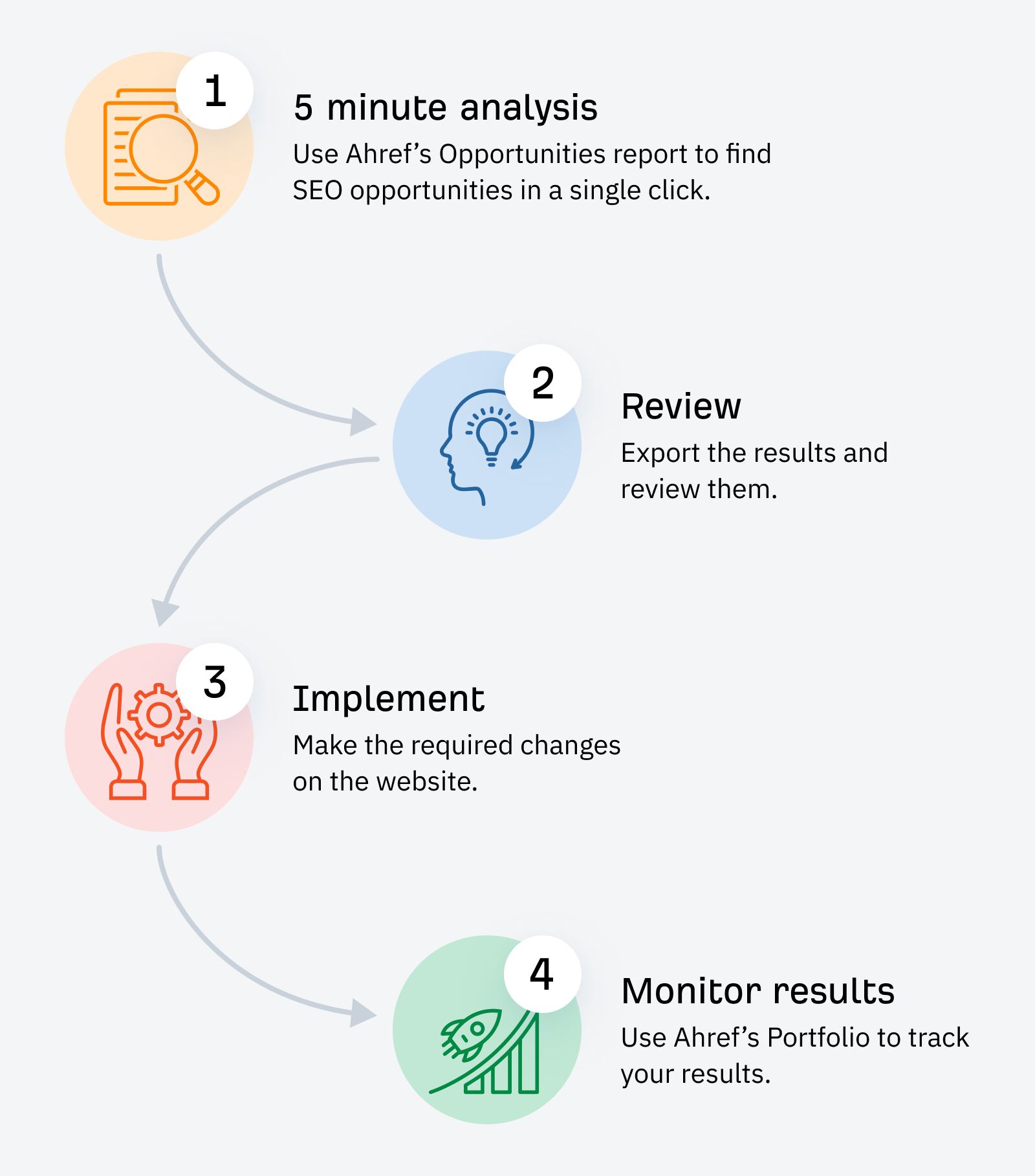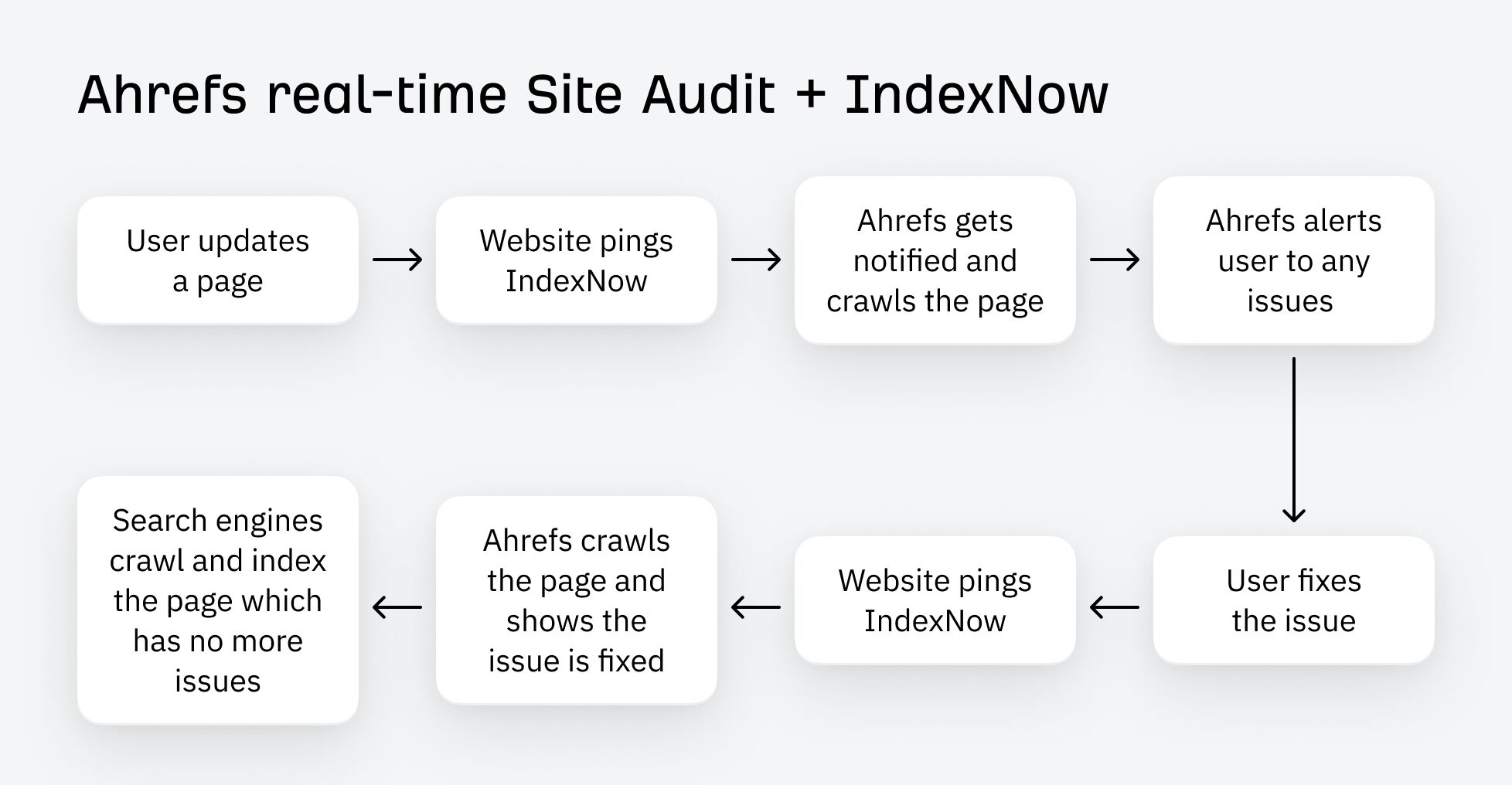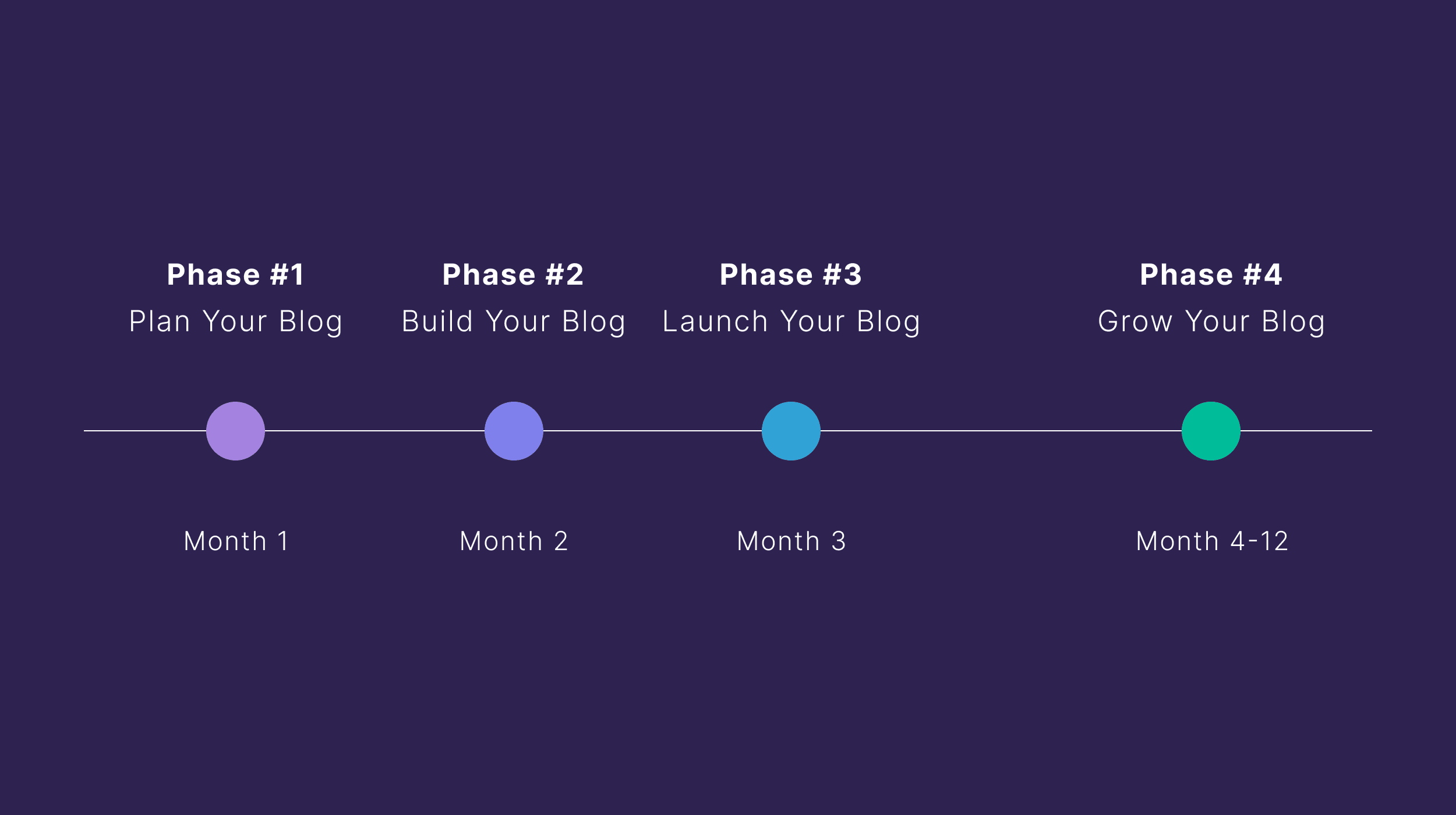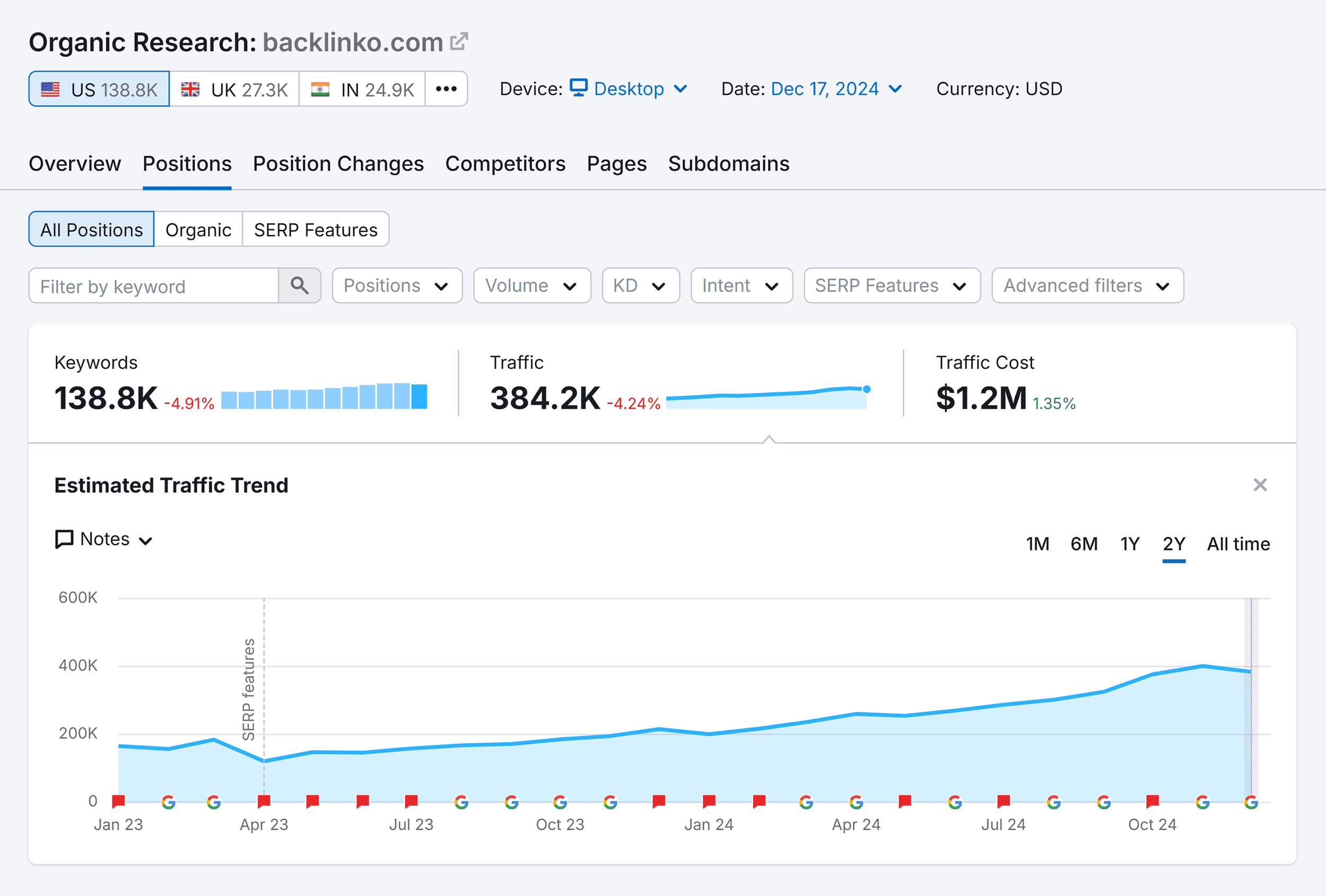SEO can be excruciatingly slow to take effect sometimes, so if you’re under pressure to prove the value of SEO early on, how can you speed up the time it takes to get results?
In this article, I’ll explain the framework and tools I’d use to approach quick SEO and the 8 methods I’d focus on first to get results quicker.
To accelerate SEO results, we need to be strategic. This starts by understanding what you can and can’t control in the process—and trying to speed up the former.
For example:
- You can control how much time you spend on analysis, so this needs to be as focused as possible (I’d suggest beginners use Ahrefs’ Opportunities report to identify opportunities quickly)
- You can’t always control how much time it takes to implement the changes
Here’s how I’d suggest you approach quick SEO using Ahrefs:
Now, let’s explore the specific methods you can use to accelerate your SEO results.
One of the biggest barriers to accelerating your SEO is waiting for search engines to detect and respond to your latest website improvements.
Google says it can sometimes take a few weeks to re-crawl your pages—ain’t nobody got time for that—this is quick SEO!
So what can you do instead?—use IndexNow.
Sidenote.
What is IndexNow? IndexNow is an open-source protocol that notifies search engines instantly when you update your website. It means your website updates can get crawled, indexed, and generate traffic faster than ever before—if you want to do quick SEO, it’s the first thing you should set up.
Ahrefs has recently partnered with IndexNow, meaning that once you’ve added your IndexNow API key in Site Audit, any changes will be pushed to search engines instantly—rather than waiting “days or weeks” for them to be pulled from your dusty old XML sitemap.
This increases the speed at which you see ranking results from your SEO changes.
To set it up:
- Go to Site Audit’s Crawl settings and scroll down to the IndexNow section
- Click on Generate to create an API key or paste in an existing one

Here’s how IndexNow works when you combine it with Ahrefs’ Site Audit:
As Google doesn’t yet support IndexNow, it’s a good idea to resubmit any updated pages to Google Search Console as well.
Further reading
“If a battle can not be won, do not fight it.”
Sun Tzu
Lower-difficulty keywords are easier to rank for because they require fewer links and are less competitive. If you play your cards right, you could rank on the first page of Google faster than ever before.
So, if you need organic traffic fast, pick your keyword battles wisely. But how can you do this?
Start by targeting keywords that are only low effort high reward.
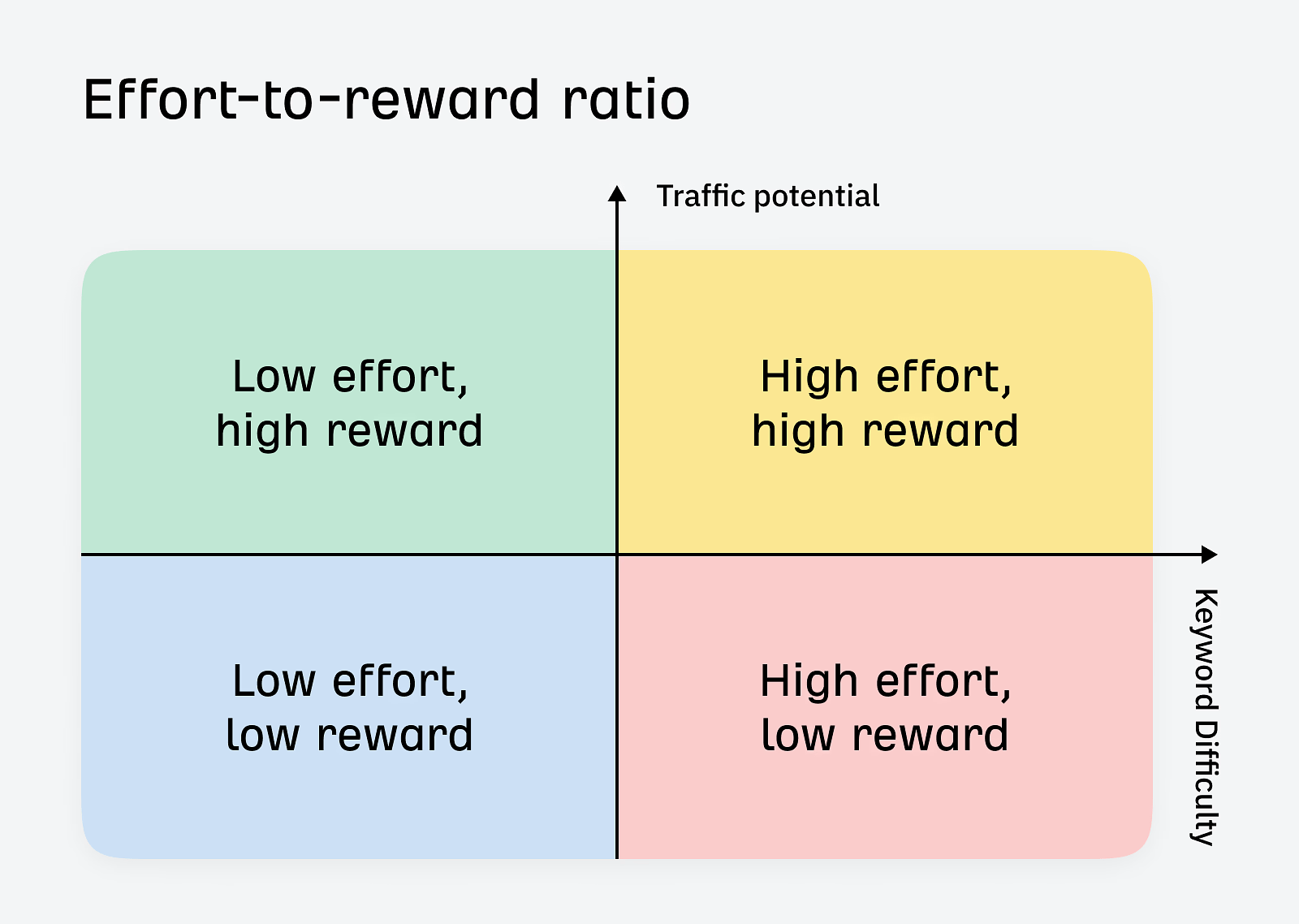
Here’s an example of this in Keywords Explorer for the keyword “dresses.”
“Dresses” is a high-effort, high-reward keyword—no surprises there.
Ahrefs estimates it will take ~153 Referring Domains (RDs) to rank in the top 10 for this keyword. That’s a lot of RDs, and unless you have bags of money, then it’s unlikely you’ll be able to compete.

But if we add a Keyword Difficulty filter combined with a Traffic Potential filter, we can find the best opportunities related to this keyword.
You can see they have low KDs and high TPs.

But let’s go one step further.
Let’s add a Lowest DR filter to find only the “weakest SERPs.” AKA, finding the easiest battles to fight. In this example, I’ve set the Domain Rating (DR) to 10 to find the easiest possible keyword battles.

For example, the keyword “engagement photo dresses” has zero Keyword Difficulty and 11k Traffic potential.

Not bad for five minutes of keyword research in Ahrefs. You can apply this technique to any keyword and tweak the filter settings to your preference.
Further reading
Rather than writing brand new content, which can take time to get indexed in Google, try focusing on updating your underperforming content.
The advantage of updating existing content is that it’s already indexed, and you’ll naturally have a better idea of what will work—which makes it faster than re-writing or writing a new article.
With some luck, you could get more website traffic in 24 hours.
You can do this by:
- Adding new information or subtopics to your content
- Consolidating similar articles together
- Comparing your article to the top-performing article for that keyword by doing a SERP analysis
Identifying underperforming content is easy with a tool like Ahrefs’ Site Explorer, as you can just plug in the URL of the content and check its performance over time.
Here’s an example of a blog post I wrote that was performing well, but recently has started to lose organic traffic.

This is the type of content that’s worth updating.
And how do I know this works? As an author at Ahrefs blog, I write and update articles every week, and it’s hard not to notice the impact of some of your updates when performance rockets into the SEO stratosphere.
In the example below, the dramatic rise in traffic happened 24 hours after the re-publish date—underlining how fast results can be from updating your content.

With the update, I focused on adding new information and subtopics and tried to retain the original structure of the post as much as possible.
Further reading
Keyword cannibalization occurs when multiple pages target the same keywords, fulfill the same intent, and cannibalize each other’s rankings in Google.
Although you can spend time carefully consolidating multiple pages into one “mega page,” the fastest way to reduce keyword cannibalization is to 301 redirect similar or duplicate pages to a single primary page. This method consolidates the authority into a single page.
So, what does keyword cannibalization look like?

To identify potential cannibalization, go to Rank Tracker and head to the GSC overview in the sidebar.

Once you’re there, you’ll see a Potential cannibalization box. Click the View All button to get a list of all potential cannibalization issues.

You’ll need to review the list, but it’s useful for identifying potential cannibalization issues across your website.
Sidenote.
You can also identify potential cannibalization for any website in just two clicks in Site Explorer by clicking on Potential Cannibalization through the Opportunities report.
Once you’re sure you’ve identified a potential cannibalization issue, you can start consolidating pages by redirecting an old, outdated page to something more relevant that you already have or combining multiple pages into something new.
In the end, it may look something like this:

Once you’ve consolidated your pages, remember to resubmit your updated page to Google.
Further reading
Strategic internal links for SEO are one of the best ways to direct visitors and Google to the most important places on your side.
They speed up your SEO because you’re not making human visitors or Google hunt for your most important content—you’re giving it to them on a plate.
Highlighting lesser-known pages that have value drives traffic to them quickly.

“You should look at it in a strategic way and think about what do you care about the most and how can you highlight that with your internal links.”
Not linking to these pages will make them orphan pages, making them harder for GoogleBot and human visitors to find.
If you don’t know where to start adding internal links, the best approach is to run a Site Audit and then go to the Internal link opportunities report.

In this report, Ahrefs has done the hard work for you and highlighted the suggested internal links in the Keyword context column.
You can then Export the report, review it, and implement it on the website.
Further reading
Making incremental changes to your on-page SEO is a useful way to help accelerate results.
Here’s an example of a page where I changed only the title tag and saw a small bump in traffic.

We can see in Page Inspect, that all I changed was the title.

On-page SEO is a big topic, but there are other elements that you can tweak quickly.
For example, most people don’t read articles in a linear way from start to finish—they scan them. As such, your headings often play a big role in grabbing your readers’ attention.
Adding a logical hierarchy, like the one below, will make your articles easier to skim and read.

Tip

Another thing you can tweak is your meta description. It’s your shop front on search engines, so if you make them more enticing and clickable, you’ll probably win more clicks.

Once you’ve tweaked your on-site SEO, remember to resubmit your page to Google.
Further reading
Link building is often a slow process, but by fixing broken links to your site, you can quickly reclaim that authority and traffic and send it to where you want rather than a 404 page.
You can do this by checking the Broken Links report in Ahrefs’ Site Explorer:
- Plugin your domain into Site Explorer — I’ve used Ahrefs.com as an example
- Select Dofollow (You can check other links afterward)
- Select Best Links: Only
- Filter from highest to lowest on the DR filter

In four quick steps, we’ve found many high-DR sites that we could have linking to us.
This works especially well for big websites, sites that have migrated, and sites where SEO has been neglected over the years.
Once you’ve identified the broken link, you can reinstate or redirect it.
In this particular example, we could probably redirect this product page to the homepage, as the anchor text is the brand itself.
Here’s a flow chart that shows you how to make the decision of whether to reinstate or redirect:

Further reading
Reclaiming unlinked brand mentions is a relatively fast and cost-effective way to acquire links from websites that have already written about your brand—but didn’t link.
In the past, I found that website owners were more responsive to requests for edits from brands they know rather than those they didn’t.
Identifying unlinked brand mentions takes time, but using a tool like Ahrefs’ Web Explorer speeds up the analysis stage.
Here’s how I would use Web Explorer to identify unlinked brand mentions for Ahrefs.com.

This searches for pages that mention “Ahrefs” but don’t link out to the Ahrefs website, and aren’t ahrefs.com.
Once you’ve got your list of websites, you can drop them a templated email using a tool like Buzzstream to reclaim links to your unlinked brand mentions.
Further reading
Final thoughts
If you want to put the pedal to the metal with your SEO—take a more strategic approach. By doing so, you’ll get results sooner rather than later.
Tools like Ahrefs help by highlighting important opportunities you might not have seen otherwise. Also, with Ahrefs’ IndexNow integration, you can instantly notify search engines when you’ve updated your site—so you’ll see results faster than ever before.
Got questions? Ping me on X.
Content Copyrights Belong to The Author. All Rights Reserved.
We're A Dallas Digital Marketing Agency That is Experts At Social Media Marketing, Website Design and Emarketing and Promotion.

